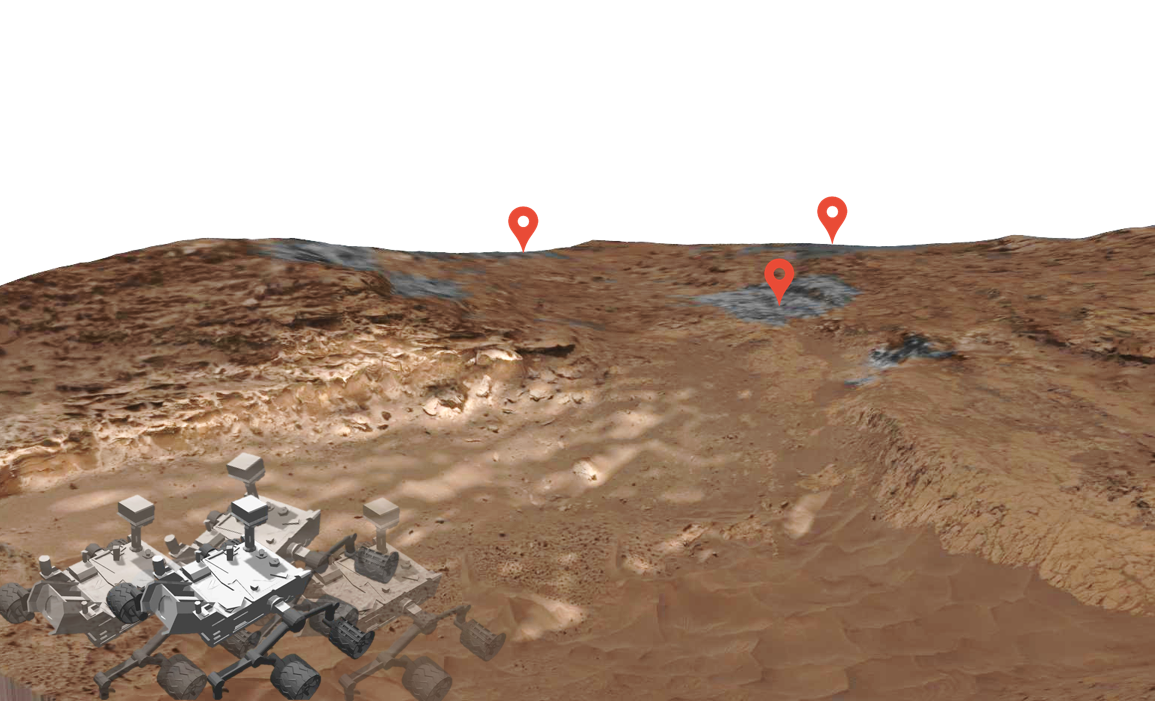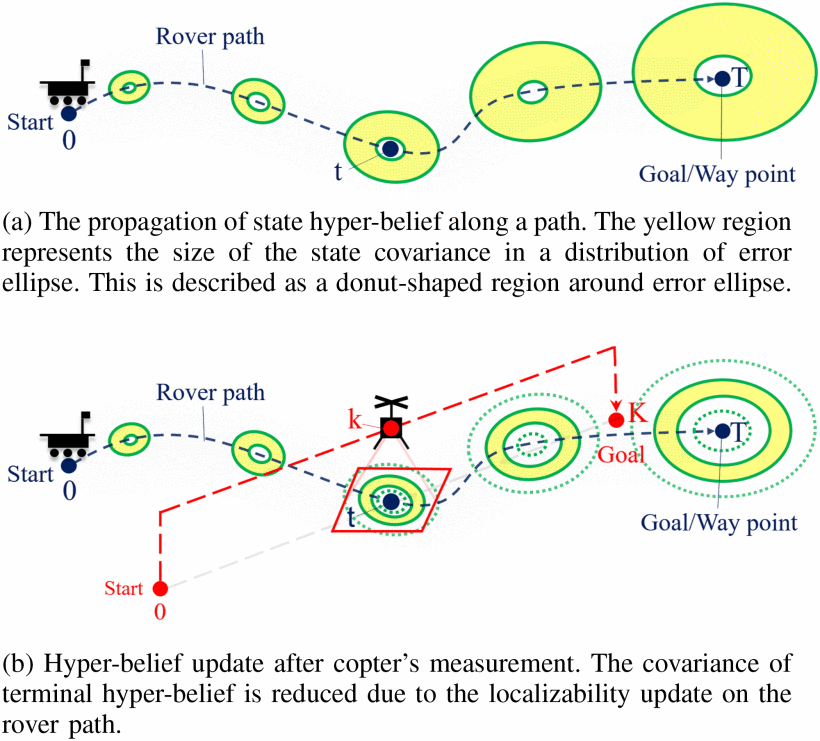Planning in uncertain environments
Due to the growing complexity and uncertainty in future space missions, autonomy is a crucial ability required for mission success. it is key to quantify and manage risks caused by the environment uncertainty in these missions. Multi-asset missions (teams of robots) can definitely provide benefits in this type of environments. 
Recently I have published two articles on this topic.
Temporal logic planning in uncertain environments with probabilistic roadmaps and belief spaces
by S.Haesaert, R.Thakker, P.Nilsson, A.Agha-mohammadi, and R.M. Murray Presented at the conference on decision making and control, Nice, 2019, (link).
Navigation problems expressed via temporal logics show promise for autonomous robot applications due to their versatility. In this paper, we introduce a method for planning with these specifications in uncertain environments that yields guaranteed satisfaction probabilities. We show that point-based value iteration can be combined with probabilistic roadmaps to solve this planning problem over the belief space of the uncertain environment.
Where to Map? Iterative Rover-Copter Path Planning for Mars Exploration
by T. Sasaki, K. Otsu, R. Thakker, S. Haesaert and A. Agha-mohammadi, Published in IEEE Robotics and Automation Letters, vol. 5, no. 2, pp. 2123-2130, April 2020. (link).
In addition to conventional ground rovers, the Mars 2020 mission will send a helicopter to Mars. The copter’s high-resolution data helps the rover to identify small hazards such as steps and pointy rocks, as well as providing rich textual information useful to predict perception performance. In this letter, we consider a three-agent system composed of a Mars rover, copter, and orbiter. The objective is to provide good localization to the rover by selecting an optimal path that minimizes the localization uncertainty accumulation during the rover’s traverse. To achieve this goal, we quantify the localizability as a goodness measure associated with the map, and conduct a joint-space search over rover‘s path and copter’s perceptual actions given prior information from the orbiter. We jointly address where to map by the copter and where to drive by the rover using the proposed iterative copter-rover path planner. We conducted numerical simulations using the map of Mars 2020 landing site to demonstrate the effectiveness of the proposed planner. 